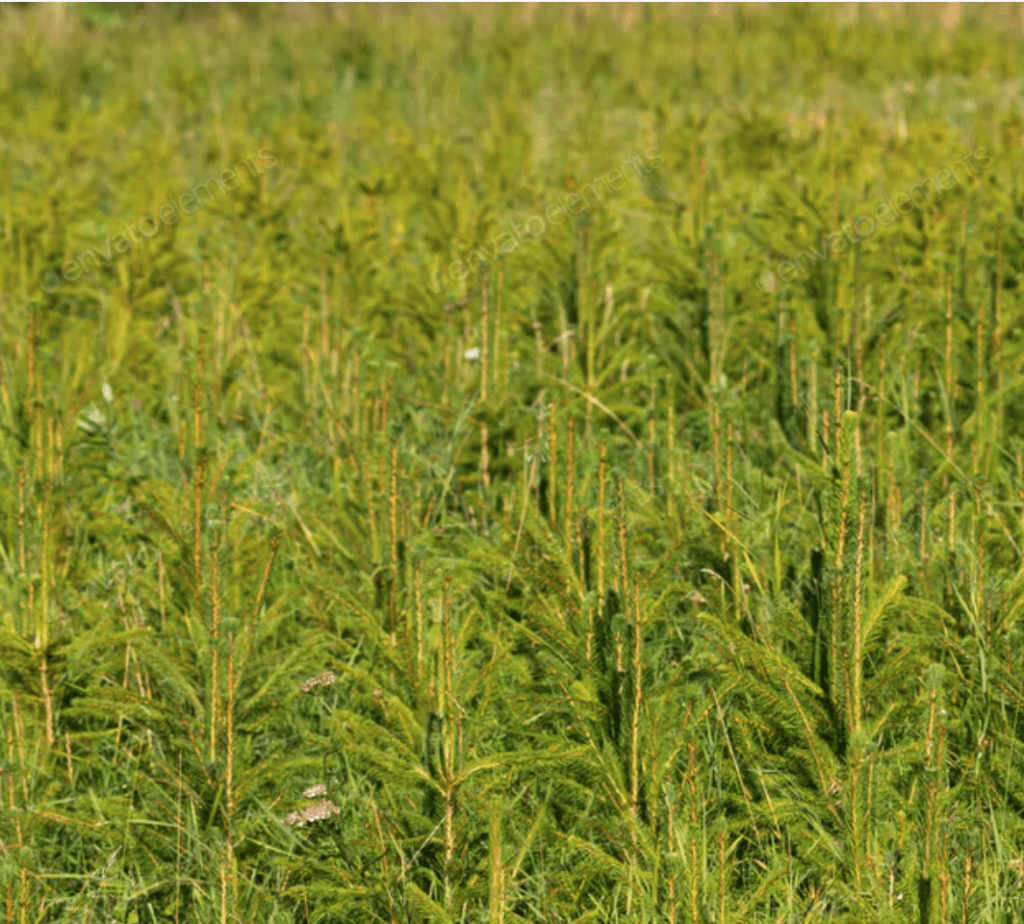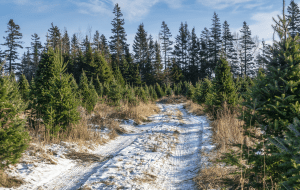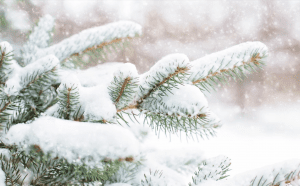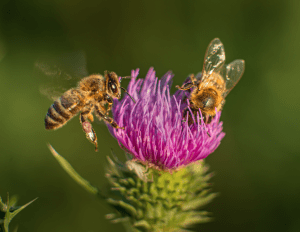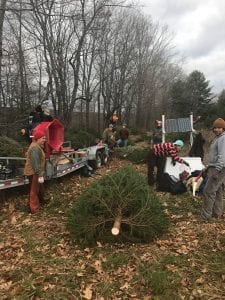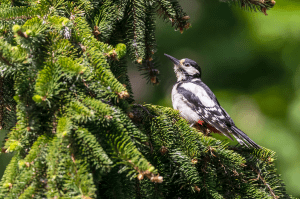Nova Scotia’s Christmas Tree reputation is rooted in the natural regeneration of hearty fir trees in well-drained soils. This model has offered an advantage over the competitor’s plantation-style (Figure 1) in the past; but as seed trees become threatened by pest infestations and disease outbreaks, growers are turning to a mixed-model and are forced to plant new christmas tree seedlings in naturalized stands or, in some cases, even develop new sites. Reforestation of abandoned agricultural fields is one opportunity for NS growers that have been attempted with varying rates of success.
Although establishing new sites is often considered a last resort, setting up brand new lots does have its advantages, including:
• Ease of management and harvesting
• Opportunity to introduce new varieties and species
• Increased control over tree-spacing and whole-lot flow
If you’re interested in converting agricultural land into a stand, there are some fundamental characteristics to look for in a potential site candidate. Ideally, it should:
✓ Be relatively flat to slightly sloping (i.e.. passable by equipment)
✓ Be well-drained and fertile (i.e. have good organic matter and available nutrients)
✓ Have good pH (i.e. ideally near 6.0 at planting time; some conifers [including balsam fir] can stand a more acidic pH, however, it is assumed that pH will decline over time)
✓ Have low ground cover (existing forage mixture may be suitable)
✓ Not be compacted (heavy traffic tends to compact soils which will prevent root penetration)
In order to ensure the security of your investment, it is important to have a site assessment completed before planting a site.
Selecting a Site
A typical site assessment will include, at a minimum, soil sampling, and testing, scouting for weeds, observing the site for environmental value, and identifying the existing plant species. Ideally, the site should also be surveyed to ensure that the lot will be square, or at least have square blocks. Depending on the previous upkeep of the site, some preliminary inputs (such as lime or fertilizers) may be necessary before it will be conducive to seedlings. New sites in Nova Scotia will likely require lime to adjust the pH, especially if you intend to grow specialty species such as Fraser fir. Balsam fir (and plenty of other common Christmas tree varieties) will grow in acidic soils, however, they will thrive at pH levels between 5.5 and 6.0. Additionally, higher pH levels will make nutrient transport to the seedlings more efficient and thus, makes better use of fertilizer inputs.
Planting Styles
In the plantation-style model, seedlings are usually planted in rows, with ground cover left between rows. There are two standard planting styles, the sod method, and the bare earth method.
The sod method has the obvious advantage of pre-existing ground cover, which is preferred from soil and environmental perspectives because erosion will be limited, and soil organic matter will be greater. Ground cover will hold moisture and cool roots during hot summer days. Unfortunately, ground cover will also compete with new seedlings for water and nutrients.
The bare earth option removes weed competition and will encourage air circulation but requires frequent herbicide treatment and exposes the soil to the elements. A combination method that leaves cover between rows and bare earth around seedlings is a more practical option. Ideally, the planted row should have no competition for moisture from the existing cover. This can be accomplished by spraying the planting-row line with herbicide the fall before planting, or by removing sod prior to planting if necessary. The area between rows should be left with cover to protect the soils and hold moisture.
Considering Maintenance
The between-rows will need to be mowed during the growing season. If there is an existing forage mix, it should be a suitable between-row cover. When designing the block, consider the width of the equipment you’ll be using on the site. If you anticipate using a flail mower between rows or custom spraying equipment, you’ll need to ensure between-rows will accommodate this.
Common tree densities are between 900-1,200 trees per acre, which is usually accomplished by planting trees at 6 ft. spacing and leaving 6 ft. between rows. Wider access roads should be installed every 6 rows. Different spacing can be used, depending on your anticipated age of harvest. Table 1 shows a yield based on a variety of spacing options.

Instead of planting the entire acreage at once, consider blocking the site by age. Plant a portion of the site with new seedlings each year to ensure that the site will be sustainable, for example: divide the site into eighths and plant 1/8 of the site every year until the first planting is ready for harvest, then replant that harvested block.
Caring for Seedlings
Try to plant in the Spring, when the soil is soft enough to dig but prior to bud break. If possible, select a calm, cloudy day for planting and check the forecast to avoid subsequent wet weather that may flood the seedlings. On the way to plant, store seedlings in a bucket of damp peat moss or sawdust (don’t flood them in water) and keep them in the shade. Scrape away the sod at the planting location if there is any cover and ensure that the hole for the seedling is large enough to accommodate the roots without crushing them. When back-filling, tamp the soil in to prevent air pockets at the surface. Mulching the area immediately surrounding each seedling will give them a considerable advantage in terms of moisture retention, root protection, and minimizing weed competition.
Balsam fir and many other common Christmas tree conifers are resilient but seedlings will need help to optimize their environments. Taking the necessary steps; controlling weeds, protecting seedlings from browsing wildlife, optimizing soil moisture, and providing nutrients, will be vital in ensuring the success of new establishments.

